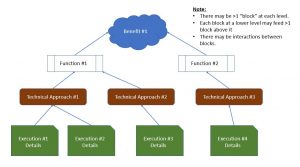Did you Teach Enough in your Patent Filing?

Finding and fixing holes in cases prior to filing helps ensure easier prosecution and successful patent grants. An expert not close to the case can find the holes better than you can. The Solution Infusion provides this service to you.
A patent must sufficiently teach others the invention such that they could re-create it. If it doesn’t, it may not be granted or may later be found invalid in litigation due to insufficiency.
Have you ever had an examiner reject a patent on this basis, were 100% certain you included teaching that overcomes the objection, and then…find that you didn’t?
It’s very disappointing. There are many reasons it occurs. In my experience, the main reason is that the inventor and attorney working on the case are not focused enough on “what’s missing?” prior to filing. They are more focused on making sure that what is included is accurate and well-represented from a legal point of view.
To ensure this doesn’t happen, it’s best to have someone not directly tied to the case review it, find “holes” in the teaching, and recommend changes to fill the holes prior to filing. This is best done by someone with considerable experience partnering with attorneys to file patents, defend them (in prosecutions, oppositions, and post-grant litigation), and oppose others’ patents. A major key to success opposing others’ patents is finding holes in the other side’s case.
There are many “teaching holes” I’ve seen, but some common ones include:
- Insufficiently Defined Terms: Many define a term to describe the invention broadly to seek broad claims and differentiate from other art. If well-defined, that’s great. When not, it can be a disaster because claims can be interpreted differently than intended, and you may face a rejection over prior art from a field unrelated to what you were trying to seek coverage in. In my inventor training, I provide an example claim space, but I don’t tell the class what I was intending the claims to cover. Then, I ask them to guess what the claims are supposed to cover. Every time, the class concludes I was trying to write claims about a networked printer. But, what I had in my mind was a hand-held pen that can print in multiple colors and play music as I use it. While my example may seem silly, I’ve actually seen this happen in real cases. In each case, the inventor and attorney had become “blind” to how their term could be interpreted by others…and just missed it.
- Insufficiently Differentiating from Prior Art: When there is close prior art, clearly demonstrating how your invention is different is key. Otherwise, expect the examiner use the art against you. When possible, using data to demonstrate the difference is very helpful. This is especially true in selection inventions. For example, you may be seeking a claim such as “a polymer having a concentration of ‘component X’ between 30-50%”, and there is prior art disclosing the component in general in a similar polymer. If you have data showing performance inside the range works well and outside the range does not, you need to include it. If you don’t you have a high probability of at best a very challenging prosecution…or worse – complete rejection.
- Insufficient Methods: If you are seeking a selection invention or pursuing functional/parametric claims, you need to disclose a method. And, it needs to be sufficiently described such that others can run it and get the same result as you. If you don’t, there is strong risk of invalidation in the future. Many quote industry standard methods, however many have allowable variations of test conditions. If so, you need to specify all test conditions.
I have the experience to help you find and fix holes prior to filing, and I can help you find holes in others’ patents during litigation also. Reach out to me at The Solution Infusion for help. It will pay dividends down the road.
Also, review these related articles: Getting Real Value from IP Maximizing Value from IP
To learn more Contact Mark

Mark Kline
© The Solution Infusion





